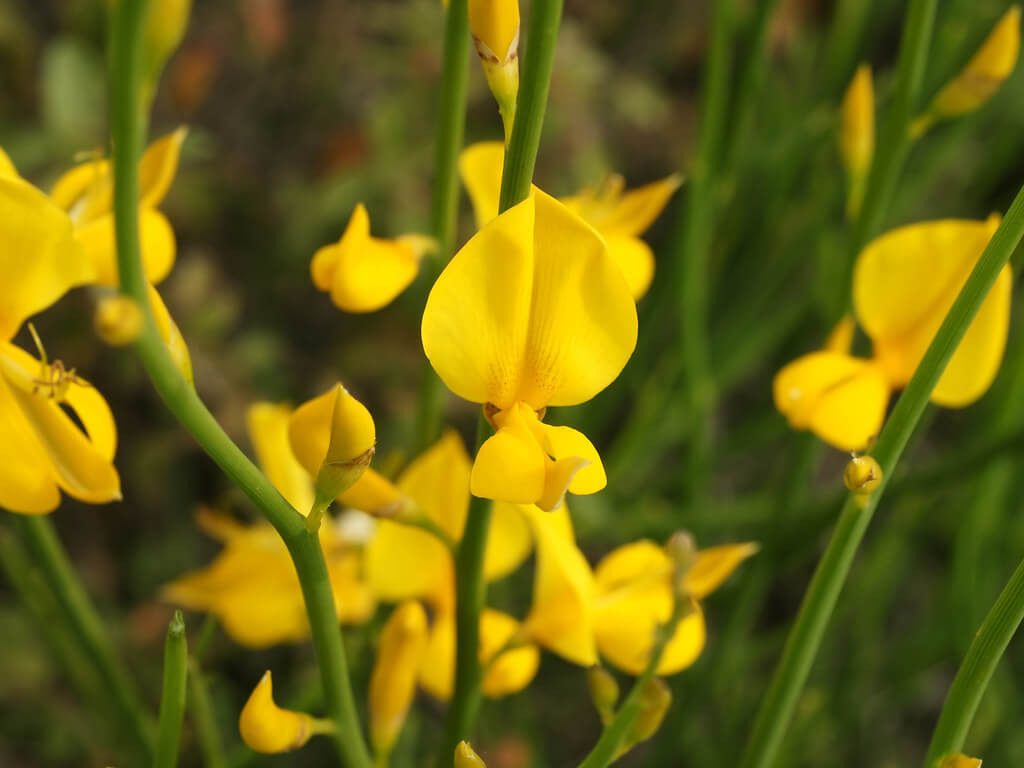AVH (2020). The Australasian Virtual Herbarium, Council of Heads of Australasian Herbaria (CHAH). Available at: Home - AVH (chah.org.au).
APC (2020) Australian Plant Census, Council of Heads of Australasian Herbaria (CHAH). Available at: Vascular Plants APNI (biodiversity.org.au)
Australian National Herbarium (2008) Records from the ANHSIR specimen database.
Brookes, M. & Barley, R. (1992). Plants Listed in Nursery Catalogues in Victoria 1855-1889. Ornamental Plant Collections Association, South Yarra, Victoria.
Carr, G.W., Yugovic, J.V. & Robinson, K.E. (1992) Environmental Weed Invasions in Victoria: Conservation and management implications. Department of Conservation and Environment and Ecological Horticulture Pty Ltd.
eFlora of South Australia (2008). Electronic Flora of South Australia. Plant Biodiversity Centre specimen database. Available at: Fact sheet for Spartium junceum (flora.sa.gov.au)
GRIN (2008). USDA, ARS, National Genetic Resources Program. Germplasm Resources Information Network - National Germplasm Resources Laboratory, Beltsville, Maryland. Available at: USDA-ARS Germplasm Resources Information Network (GRIN) (ars-grin.gov)
Hellmers, H. and Ashby, W.C. (1958). Growth of native and exotic plants under controlled temperatures and in the San Gabriel Mountains, California. Ecology 39(3):416-428.
Heywood, V.H. (1968). Spartium in Tutin, T.G., Heywood, V.H., Burges, N.A., Moore, D.M., Valentine, D.H., Walters, S.M. & Webb, D.A., Flora Europaea Volume 2. Cambridge University Press, Cambridge, UK.
Hosking, J.R., Sheppard, A.W. & Smith, J.M.B. (2000). Broom, Cytisus scoparius. CRC for Weed Management Systems. Best practice management guide 2. Adelaide, Australia.
Hoshovsky, M. (2001). The Nature Conservancy. Element stewardship abstract for Spartium junceum. Spanish Broom, Weaver's Broom.
Muyt, A. (2001). Bush Invaders of South-East Australia: a Guide to the Identification and Control of Environmental Weeds found in South-East Australia. R.G. & F.J. Richardson, Victoria.
National Herbarium of New South Wales (2008). Records from the NSWdata specimen database.
National Herbarium of Victoria (2008). Records from the MELISR specimen database.
Nilsen, E.T. (2000). Spartium junceum L. in: Bossard, C.C., Randall, J.M. & Hoshovsky, M.C. (Eds.). Invasive Plants of California's Wildlands. Berkeley, CA: University of California Press.
Parsons, W.T. and Cuthbertson, E.G. (2001). Noxious Weeds of Australia. CSIRO Publishing, Victoria.
Queensland Herbarium (2008). Data provided by the Queensland Herbarium.
Regional Weeds Advisory Committee: Southern Tablelands & South Coast Noxious Plants Committee (2002-2007). Broom and Gorse Regional Management Plan.
Shepherd, R.C.H. (2004). Pretty but Poisonous: Plants Poisonous to People. An illustrated guide for Australia. R.G. & F.J. Richardson. Melbourne. Australia.
Southern Tablelands and South Coast Noxious Plants Committee (undated). Spanish Broom.
Webb, C.J. (1988). Fabaceae in Webb, C.J., Sykes, W.R. & Garnock-Jones, P.J. (Eds.). Flora of New Zealand, Volume IV. Botany Division, D.S.I.R., Christchurch, New Zealand.
Wiecek, B. (2002). Viminaria in Harden, G.J. (Ed), Flora of New South Wales, Volume 2. Royal Botanic Gardens Sydney. University of New South Wales Press. Sydney. Australia.
Wiecek, B. & Williams, J.B. (2002). Jacksonia in Harden, G.J. (Ed), Flora of New South Wales, Volume 2. Royal Botanic Gardens Sydney. University of New South Wales Press, Sydney.
Zouhar, K. (2005). Spartium junceum in Fire Effects Information System, [Online]. U.S. Department of Agriculture, Forest Service, Rocky Mountain Research Station, Fire Sciences Laboratory.



































